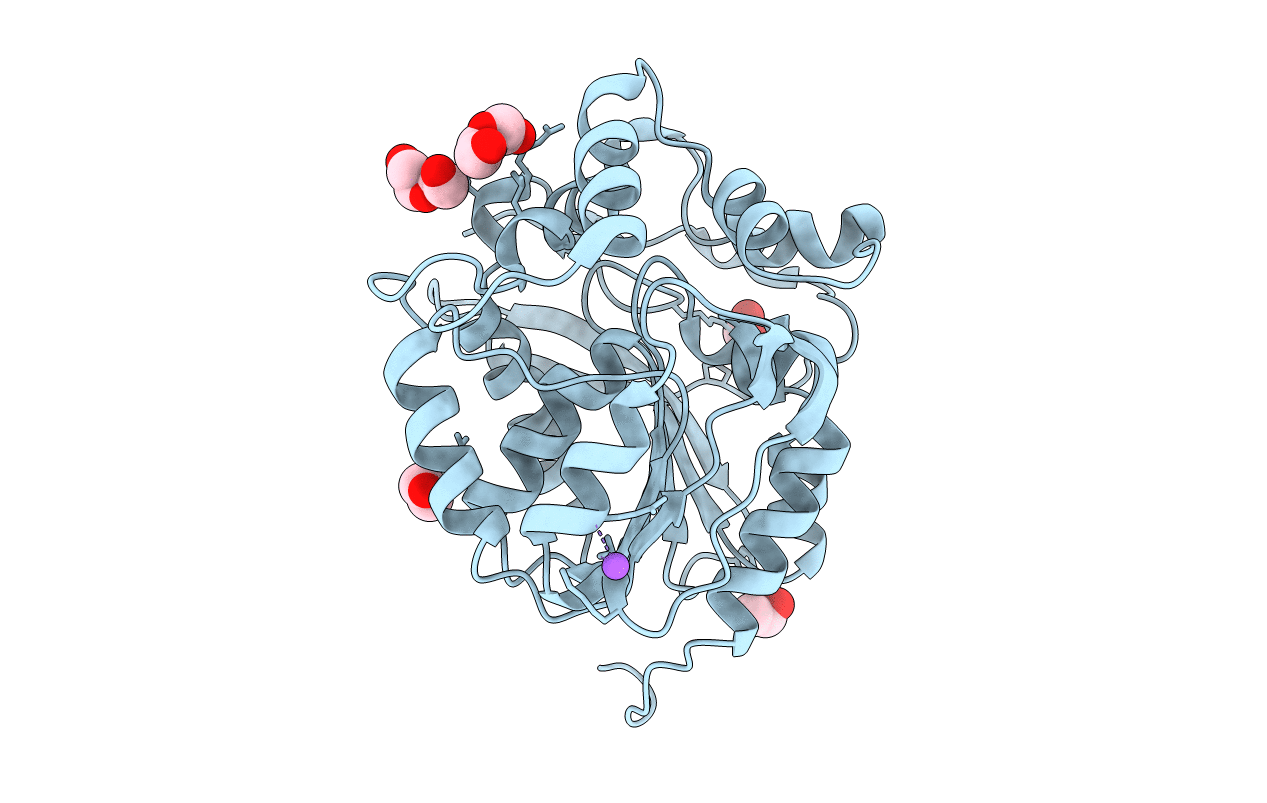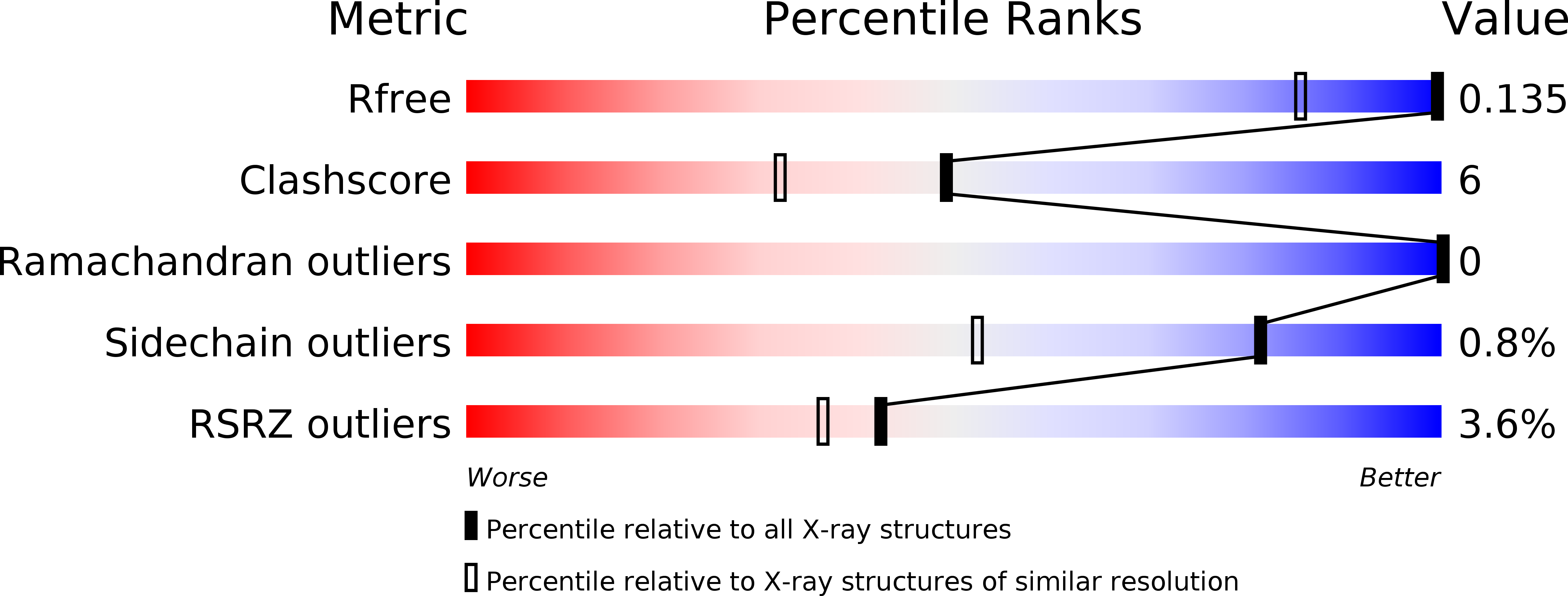
Deposition Date
2017-12-15
Release Date
2019-02-27
Last Version Date
2024-01-17
Entry Detail
PDB ID:
6F9O
Keywords:
Title:
Crystal structure of cold-adapted haloalkane dehalogenase DpcA from Psychrobacter cryohalolentis K5
Biological Source:
Source Organism:
Psychrobacter cryohalolentis (strain K5) (Taxon ID: 335284)
Host Organism:
Method Details:
Experimental Method:
Resolution:
1.05 Å
R-Value Free:
0.13
R-Value Work:
0.11
R-Value Observed:
0.11
Space Group:
P 1 21 1


